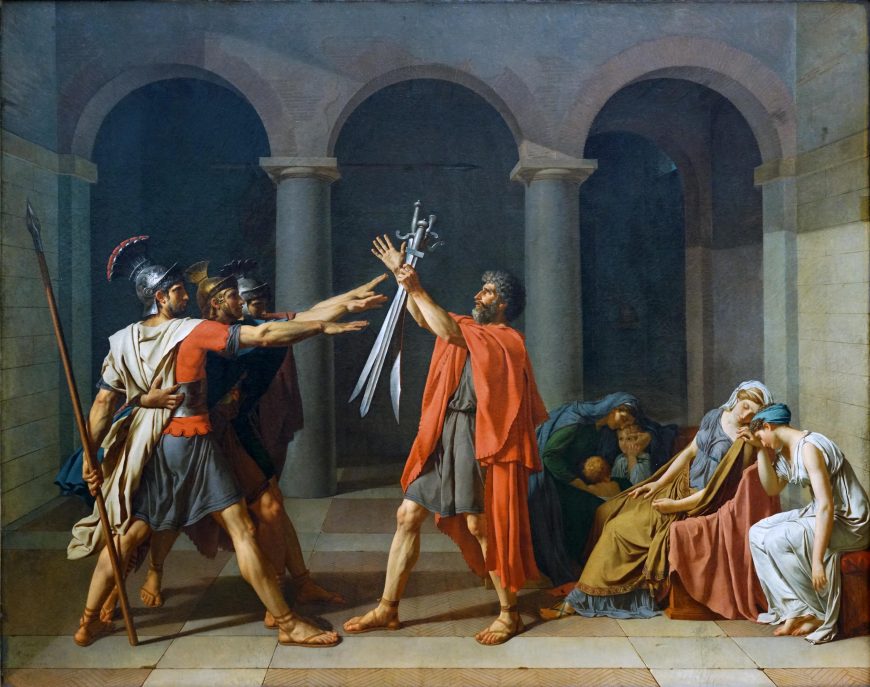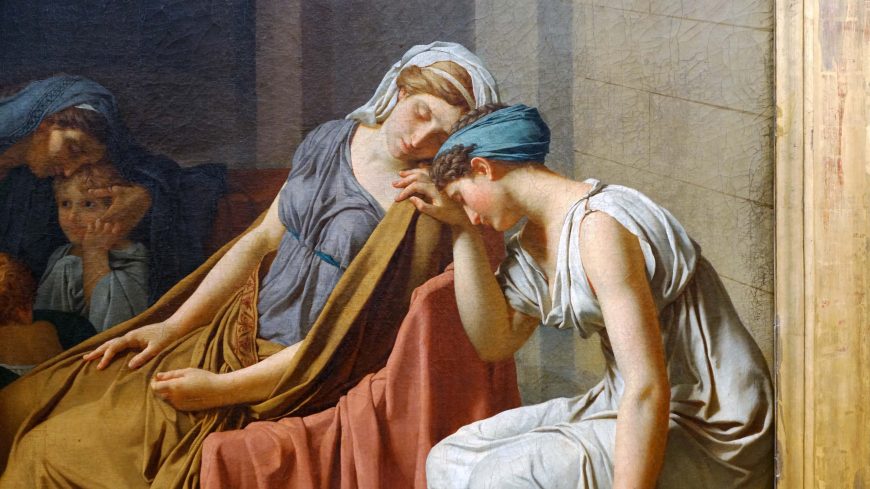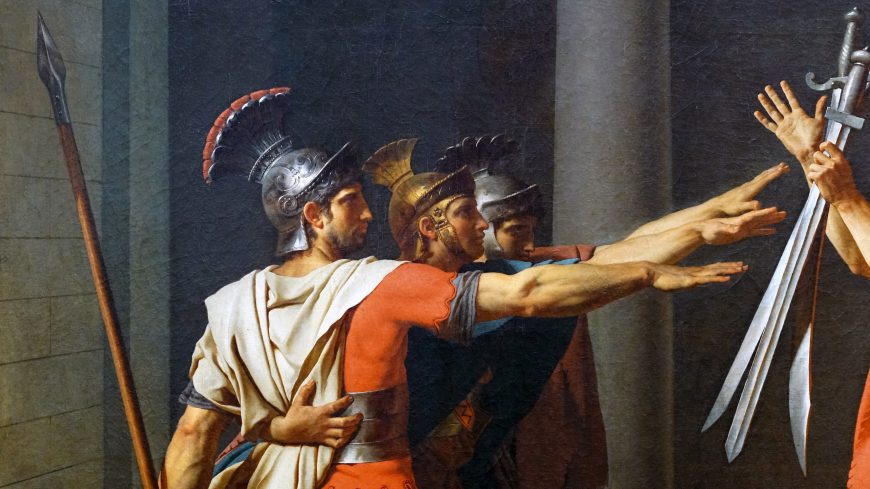Jacques-Louis David, Oath of the Horatii
In 1785 visitors to the Paris Salon (the official art exhibition organized by the Academy of Fine Arts) were transfixed by one painting, Jacques-Louis David’s Oath of the Horatii. It depicts three men, brothers, saluting toward three swords held up by their father as the women behind him grieve—no one had ever seen a painting like it. Similar subjects had always been seen in the Salons before but the physicality and intense emotion of the painting was new and undeniable. The revolutionary painting changed French art but was David also calling for another kind of revolution—a real one?

Conquer or die
The story of Oath of the Horatii came from a Roman legend first recounted by the Roman historian Livy involving a conflict between the Romans and a rival group from nearby Alba. Rather than continue a full-scale war, they elect representative combatants to settle their dispute. The Romans select the Horatii and the Albans choose another trio of brothers, the Curatii. In the painting we witness the Horatii taking an oath to defend Rome.

The women know that they will also bear the consequence of the battle because the two families are united by marriage. One of the wives in the painting is a daughter of the Curatii and the other, Camilla, is engaged to one of the Curatii brothers. At the end of the legend the sole surviving Horatii brother kills Camilla, who condemned his murder of her beloved, accusing Camilla of putting her sentiment above her duty to Rome. The moment David chose to represent was, in his reported words, “the moment which must have preceded the battle, when the elder Horatius, gathering his sons in their family home, makes them swear to conquer or die.”

A rigorously organized painting
To tell the story of the oath, David created a rigorously organized painting with a scene set in what might be a Roman atrium dominated by three arches at the back that keep our attention focused on the main action in the foreground. There we see a group of three young men framed by the first arch, the Horatii brothers, bound together with their muscled arms raised in a rigid salute toward their father framed by the central arch. He holds three swords aloft in his left hand and raises his right hand signifying a promise or sacrifice. The male figures create tense, geometric forms that contrast markedly with the softly curved, flowing poses of the women seated behind the father. David lit the figures with a stark, clinical light that contrasts sharply with the heightened drama of the scene as if he were requiring the viewer to respond to the scene with a mixture of passion and rationality.
Personal sacrifice for an ideal
Today the painting is typically interpreted in the context of the French Revolution and David’s own direct involvement as a revolutionary. With this in mind, we can understand how one might read Oath of the Horatii as a painting designed to rally republicans (those who believed in the ideals of a republic, and not a monarchy, for France) by telling them that their cause will require the dedication and sacrifice of the Horatii. Those who support this view cite some of the rousing lines from Corneille’s tragedy such as, “Before I am yours, I belong to my country,” as well as the response of contemporary left-wing writers who praised David’s republican sentiments. Those who disagree with this interpretation argue that David was enmeshed in the system of royal patronage, that the painting was accepted into the Salon with no negative response from official quarters and later royal commissions followed.[1]
- Dr. Claire Black McCoy, "Jacques-Louis David, Oath of the Horatii," in Smarthistory, January 7, 2016, accessed March 15, 2023, https://smarthistory.org/jacques-louis-david-oath-of-the-horatii/ ↵

